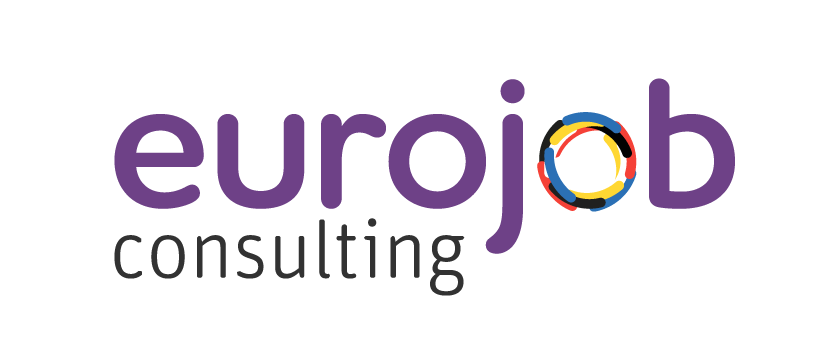Accelerating recruitment: Effective strategies for Germany & France

In today's competitive job market, reducing recruitment time is essential for organizations striving to attract and retain top talent. This is especially true in countries like Germany and France, where complex labor laws and administrative procedures can prolong the hiring process. We look at the key strategies and offer practical insights and examples to help companies in Germany and France reduce their recruitment time and attract the best talent quickly and effectively.
2. Internal mobility and employee referrals
3. Optimize legal and administrative processes
4. Data-driven recruitment

Partnering with recruitment agencies and headhunters can expedite the hiring process by leveraging their specialized expertise, extensive networks and streamlined sourcing methods. Recruitment agencies and headhunters bring valuable resources to the table that can significantly reduce the time and effort required to find and hire top talent. Here are several ways companies can effectively engage these professionals and examples of how they can benefit from such partnerships:
"Recruitment agencies and headhunters bring valuable resources to the table that can significantly reduce the time and effort required to find and hire top talent."
Adélaïde Sapelier
Recruiter
Eurojob-Consulting

Specialized expertise and industry knowledge
Recruitment agencies often specialize in specific industries or job functions*, allowing them to develop deep expertise and a thorough understanding of the market. For instance, Robert Half specializes in accounting, finance, and administrative roles. Their recruiters have an in-depth **understanding of the skills and qualifications required for these positions, enabling them to quickly identify and match suitable candidates. This specialized knowledge can significantly shorten the recruitment process by ensuring that only highly qualified candidates are presented.
Access to a vast talent pool
Recruitment agencies and headhunters maintain extensive databases of potential candidates, including passive job seekers who may not be actively looking for new opportunities but are open to the right offer. Michael Page, for example, has a large network of professionals across various industries. By tapping into these networks, companies can access a broader talent pool and find candidates more quickly than they could on their own.
Streamlined sourcing and screening processes
Agencies and headhunters have established processes for sourcing, screening, and interviewing candidates, which can greatly reduce the time and effort required from internal HR teams. For example, Adecco uses advanced technologies and methodologies to quickly identify and evaluate candidates. Their rigorous screening processes ensure that only the most qualified candidates are presented to the hiring company, speeding up the recruitment timeline.
Expert negotiation and offer management
Headhunters are skilled in negotiating offers and managing candidate expectations, which can help close deals faster. They act as intermediaries between the company and the candidate, addressing any concerns and ensuring that both parties are aligned. This expertise can be particularly valuable in competitive job markets where top candidates may have multiple offers. For instance, Heidrick & Struggles excels in executive search and has a track record of successfully placing senior leaders by managing complex negotiations efficiently.
Temporary and contract staffing solutions
Recruitment agencies can also provide temporary and contract staffing solutions to fill urgent or short-term needs. This flexibility can be crucial for maintaining productivity while the search for a permanent candidate continues. Companies like Randstad offer comprehensive temporary staffing services, allowing organizations to quickly fill gaps and keep operations running smoothly.
Global reach and local expertise
For multinational companies or those looking to expand internationally, recruitment agencies with a global presence can offer significant advantages. Agencies like Kelly Services have a worldwide network and local expertise in various regions, including Germany and France. This combination of global reach and local knowledge helps companies navigate different labor markets and cultural nuances, ensuring a faster and more effective recruitment process.
Reduced time-to-hire for specialized and high-level positions
High-level and specialized positions often require a targeted approach that headhunters are well-equipped to handle. These roles can be challenging to fill through traditional recruitment methods due to the specific skill sets and experience required. Egon Zehnder, a leading executive search firm, has a proven track record in filling C-suite and other senior positions quickly by leveraging their extensive networks and industry insights.
Enhanced employer branding
Partnering with reputable recruitment agencies can also enhance a companys employer brand. Agencies like ManpowerGroup work closely with their clients to understand their culture and values, ensuring that these are communicated effectively to potential candidates. This alignment helps attract candidates who are not only qualified but also a good cultural fit, reducing the likelihood of turnover and further streamlining the recruitment process.
Customized recruitment solutions
Recruitment agencies often offer customized solutions tailored to the specific needs of their clients. For example, Hays provides bespoke recruitment strategies that align with the unique requirements of each company. Whether it's a full-service recruitment process outsourcing (RPO) or a targeted search for niche roles, these customized solutions help companies achieve their hiring goals more efficiently.
Promoting internal mobility and encouraging employee referrals are effective strategies to expedite the hiring process and reduce recruitment time. These approaches leverage existing resources and networks within the organization, leading to quicker, more cost-effective and higher-quality hires. Here's an in-depth look at how these strategies can be implemented and their benefits:
Promoting internal mobility
Utilize internal job boards: Creating and maintaining an internal job board where current employees can view and apply for open positions within the company is a great way to promote internal mobility. For example, SAP has an internal job board and encourages employees to explore new opportunities within the organization. This practice not only reduces recruitment time but also boosts employee morale and retention by providing clear career advancement paths.
Career development programs: Offering robust career development programs and training opportunities can prepare employees for new roles within the company. Companies like IBM have implemented extensive training and development programs that enable employees to acquire new skills and transition into different roles. This approach ensures that when a position opens up, there are already qualified candidates within the organization who can fill it quickly.
Succession planning: Implementing a succession planning strategy ensures that potential leaders and skilled employees are ready to step into new roles as they become available. Siemens employs succession planning to identify and develop future leaders within the company, which helps in filling critical positions swiftly and efficiently.
Internal mobility metrics: Tracking and measuring internal mobility metrics can provide insights into how effectively employees are moving within the organization. LinkedIn uses data analytics to track internal mobility trends and improve their processes continuously. This helps in identifying any bottlenecks and ensuring that internal mobility initiatives are aligned with the company's goals.
Encouraging employee referrals
Referral programs: Implementing a structured employee referral program can significantly expedite the hiring process. Ernst & Young has a well-established referral program that incentivizes employees to refer qualified candidates. According to internal reports, referred candidates are 55 % faster to hire compared to traditional applicants. This not only speeds up the hiring process but also ensures that referred candidates are a good cultural fit.
Incentives and rewards: Offering attractive incentives and rewards for successful referrals can motivate employees to participate actively in the referral program. Companies like Google provide substantial bonuses for successful hires through referrals, which has led to a high volume of quality candidates being referred by existing employees.
Simplified referral process: Making the referral process straightforward and easy for employees encourages more participation. HubSpot has a user-friendly referral system that allows employees to refer candidates quickly and track the status of their referrals. This transparency and ease of use increase engagement and the overall effectiveness of the referral program.
Leverage social networks: Encouraging employees to share job openings within their professional networks on platforms like LinkedIn can broaden the reach of the referral program. For example, Salesforce encourages employees to post job openings on their social media accounts, tapping into their extended networks to find potential candidates quickly.
Recognition of referral contributions: Publicly recognizing and celebrating successful referrals can boost morale and encourage more employees to participate in the referral program. Zappos regularly highlights referral successes in company meetings and newsletters, reinforcing the value of employee contributions to the hiring process.
Combining internal mobility and referrals
Career path transparency: Making career paths within the organization transparent and accessible helps employees understand the opportunities available to them and how they can progress. Microsoft provides employees with clear career paths and encourages them to apply for internal positions as well as refer external candidates, creating a balanced approach to filling roles quickly.
Employee engagement and satisfaction: Both internal mobility and referral programs contribute to higher employee engagement and satisfaction. When employees see opportunities for growth within the company and feel valued for their contributions to the hiring process, it leads to a more motivated and committed workforce. LinkedIn has found that employees who make successful referrals are more engaged and have higher job satisfaction, which positively impacts the overall productivity of the organization.

Optimizing legal and administrative processes is crucial for reducing recruitment time, especially in countries like Germany and France, where labor laws and regulations can be particularly stringent. Streamlining these processes ensures compliance, reduces delays, and enhances the overall efficiency of the hiring process. Here are several strategies and examples of how companies can optimize their legal and administrative processes:
Pre-prepare standardized documentation
Having standardized documentation ready in advance can save significant time during the recruitment process. This includes offer letters, employment contracts and onboarding forms. For example, Siemens has a repository of pre-approved contract templates and offer letters that comply with local labor laws. This preparation allows them to quickly generate and distribute necessary documents, reducing the time required to finalize new hires.
Use digital tools for document management
Implementing digital tools for managing and signing documents can expedite administrative tasks. Tools like DocuSign and Adobe Sign enable companies to handle documentation electronically, which not only speeds up the process but also ensures secure storage and easy retrieval. For instance, BNP Paribas uses digital signature tools to streamline the signing of employment contracts, reducing the time required to complete the hiring process.
Automate compliance checks
Automating compliance checks can significantly reduce the time spent ensuring that new hires meet all legal requirements. Sterling Talent Solutions offers automated background checks and compliance verification services that help companies quickly validate candidate information. This automation ensures that all necessary checks are completed efficiently, minimizing delays caused by manual verification processes.
Streamline visa and work permit processes
For companies hiring international candidates, streamlining visa and work permit processes is essential. Partnering with specialized agencies or legal experts can help navigate the complexities of immigration laws. Fragomen, a global immigration law firm, assists companies in managing visa applications and work permits, ensuring compliance with local regulations while reducing the time required to secure necessary approvals.
Collaborate closely with legal and HR teams
Close collaboration between legal and HR teams ensures that all legal requirements are understood and addressed promptly. Regular training and updates on changes in labor laws can help HR teams stay informed and compliant. Deutsche Bank holds regular training sessions for their HR staff on labor law updates and compliance requirements, enabling them to handle legal and administrative tasks more efficiently.
Implement onboarding software
Using onboarding software can streamline the administrative tasks associated with new hires, such as filling out forms, completing mandatory training and accessing company resources. Platforms like BambooHR and Workday offer comprehensive onboarding solutions that automate many of these tasks. For example, Airbus uses onboarding software to ensure that new employees complete all necessary administrative steps quickly and efficiently, reducing the time between offer acceptance and full integration into the company.
Pre-employment assessments and automated screening
Conducting pre-employment assessments and automated screening can ensure that candidates meet all legal and compliance requirements before they are hired. Tools like HireRight provide comprehensive screening solutions that verify a candidate's background, qualifications, and compliance with labor laws. By automating these processes, companies can quickly identify and address any potential issues, reducing delays in the hiring process.
Regularly review and update processes
Regularly reviewing and updating legal and administrative processes ensures that they remain efficient and compliant with current laws. Conducting audits and soliciting feedback from HR staff can help identify areas for improvement. Siemens conducts regular process reviews to streamline their recruitment procedures continuously, ensuring that they can adapt quickly to any changes in legal requirements.
Centralize recruitment administration
Centralizing recruitment administration can help streamline communication and coordination among different departments involved in the hiring process. This approach ensures that all necessary steps are completed promptly and efficiently. Daimler has a centralized recruitment administration team that coordinates all aspects of the hiring process, from initial candidate screening to final contract signing, reducing administrative delays and ensuring a smooth hiring experience.
Data-driven recruitment involves using analytics and data to inform and optimize the hiring process. By leveraging data, organizations can make more informed decisions, identify bottlenecks and improve the overall efficiency of their recruitment efforts. Here are several strategies and examples of how companies can implement data-driven recruitment:
Track key recruitment metrics
Monitoring key recruitment metrics such as time-to-hire, cost-per-hire, source of hire and candidate drop-off rates provides valuable insights into the effectiveness of the recruitment process. For instance, IBM tracks these metrics to identify areas for improvement and ensure they are meeting their hiring goals. By analyzing this data, IBM can pinpoint where delays occur and take corrective actions to streamline their process.
Use predictive analytics
Predictive analytics can forecast future hiring needs and identify the best sources of candidates. Tools like Hiretual and Entelo use predictive analytics to analyze past hiring data and predict where the best candidates are likely to come from. For example, Unilever uses predictive analytics to anticipate their hiring needs and proactively build a talent pipeline, reducing the time and effort required to fill open positions.
Analyze candidate sourcing channels
Understanding which sourcing channels yield the best candidates can help optimize recruitment efforts. By analyzing data from job boards, social media, employee referrals and recruitment agencies, companies can allocate resources more effectively. LinkedIn offers analytics tools that help employers track the performance of different sourcing channels. By identifying the most effective sources, companies like Accenture can focus their efforts on the channels that provide the highest quality candidates.
Leverage artificial intelligence and machine learning
AI and machine learning can analyze large volumes of data to identify patterns and trends that humans might overlook. These technologies can be used to screen resumes, assess candidate fit and even predict future job performance. For example, Google uses AI-driven tools to match candidate profiles with job requirements, significantly speeding up the screening process. This approach allows Google to quickly identify the best candidates and move them through the hiring process more efficiently.
Implement automated candidate screening
Automated candidate screening tools can quickly filter out unqualified candidates, saving recruiters time and effort. Platforms like Pymetrics use neuroscience-based games and AI to assess candidate fit and predict job performance. Unilever uses Pymetrics to screen entry-level candidates, resulting in a faster and more efficient recruitment process.
Utilize recruitment dashboards
Recruitment dashboards provide real-time insights into the hiring process, allowing recruiters to track progress and make data-driven decisions. Workday offers comprehensive recruitment dashboards that display key metrics and trends. By using these dashboards, companies like Adobe can monitor their recruitment performance and quickly identify areas for improvement.
Conduct talent analytics
Talent analytics involves analyzing data related to employee performance, retention, and engagement to improve hiring decisions. By understanding the characteristics of high-performing employees, companies can refine their hiring criteria and select candidates who are more likely to succeed. Microsoft uses talent analytics to identify the traits and skills of their top performers and incorporate these insights into their recruitment strategies.
Optimize job postings with SEO
Analyzing data on job posting performance can help optimize job descriptions for search engines, ensuring they reach the right candidates. Tools like Textio analyze the language and structure of job postings to improve their effectiveness. Companies like Airbnb use Textio to craft job descriptions that attract a diverse and qualified pool of candidates, reducing the time-to-hire.
Measure and improve candidate experience
Collecting and analyzing feedback from candidates about their recruitment experience can provide valuable insights for improving the process. Candidate Experience Awards (CandE) collects data from candidates about their experiences with various companies. By participating in these surveys, companies like Johnson & Johnson can identify pain points in their recruitment process and make necessary adjustments to enhance the candidate experience.
Conduct recruitment process audits
Regular audits of the recruitment process can help identify inefficiencies and areas for improvement. By analyzing data on each stage of the hiring process, companies can streamline workflows and eliminate unnecessary steps. Deloitte conducts regular audits of their recruitment process, using data to refine their strategies and ensure a smooth and efficient hiring experience.

Jérôme Lecot




